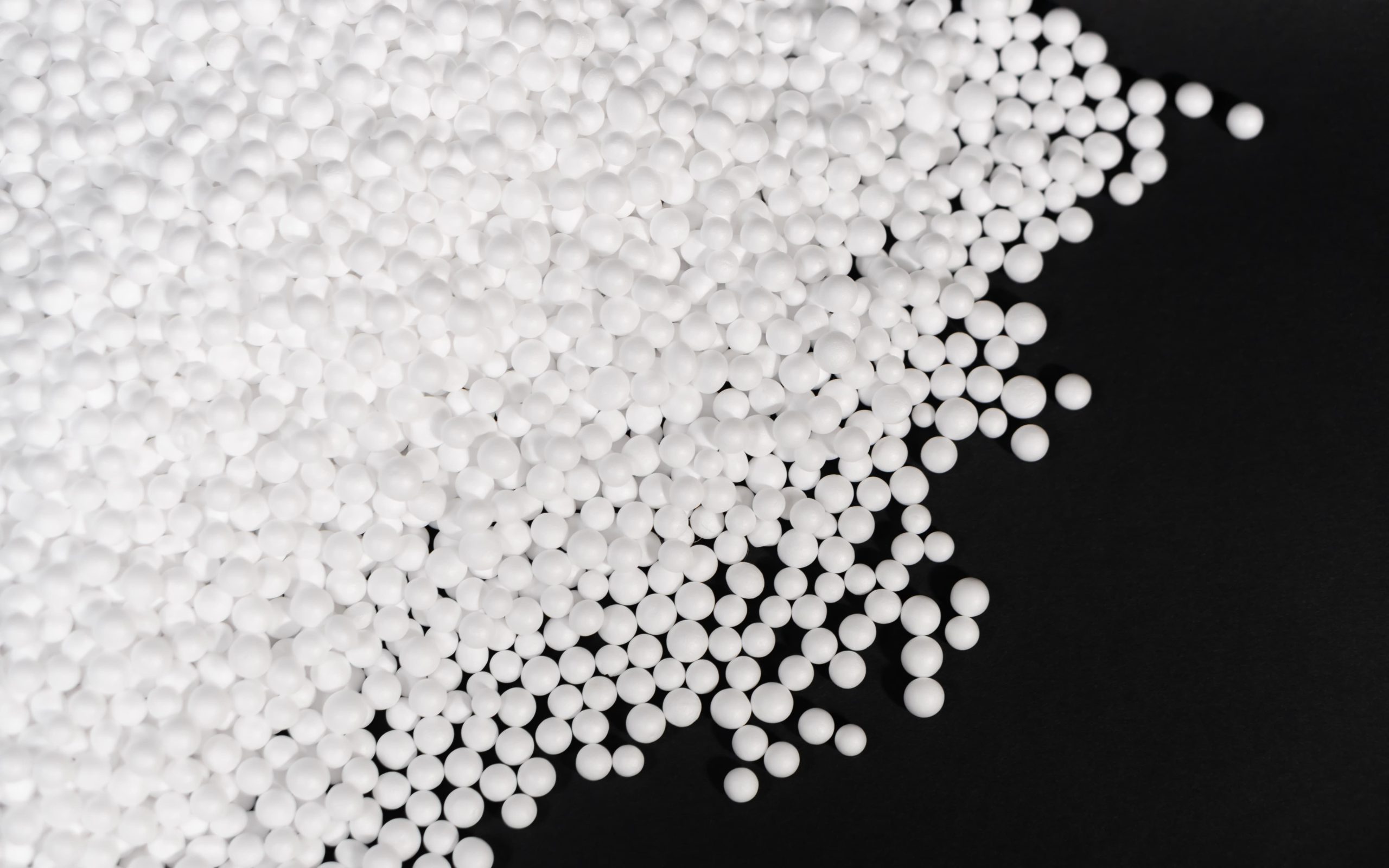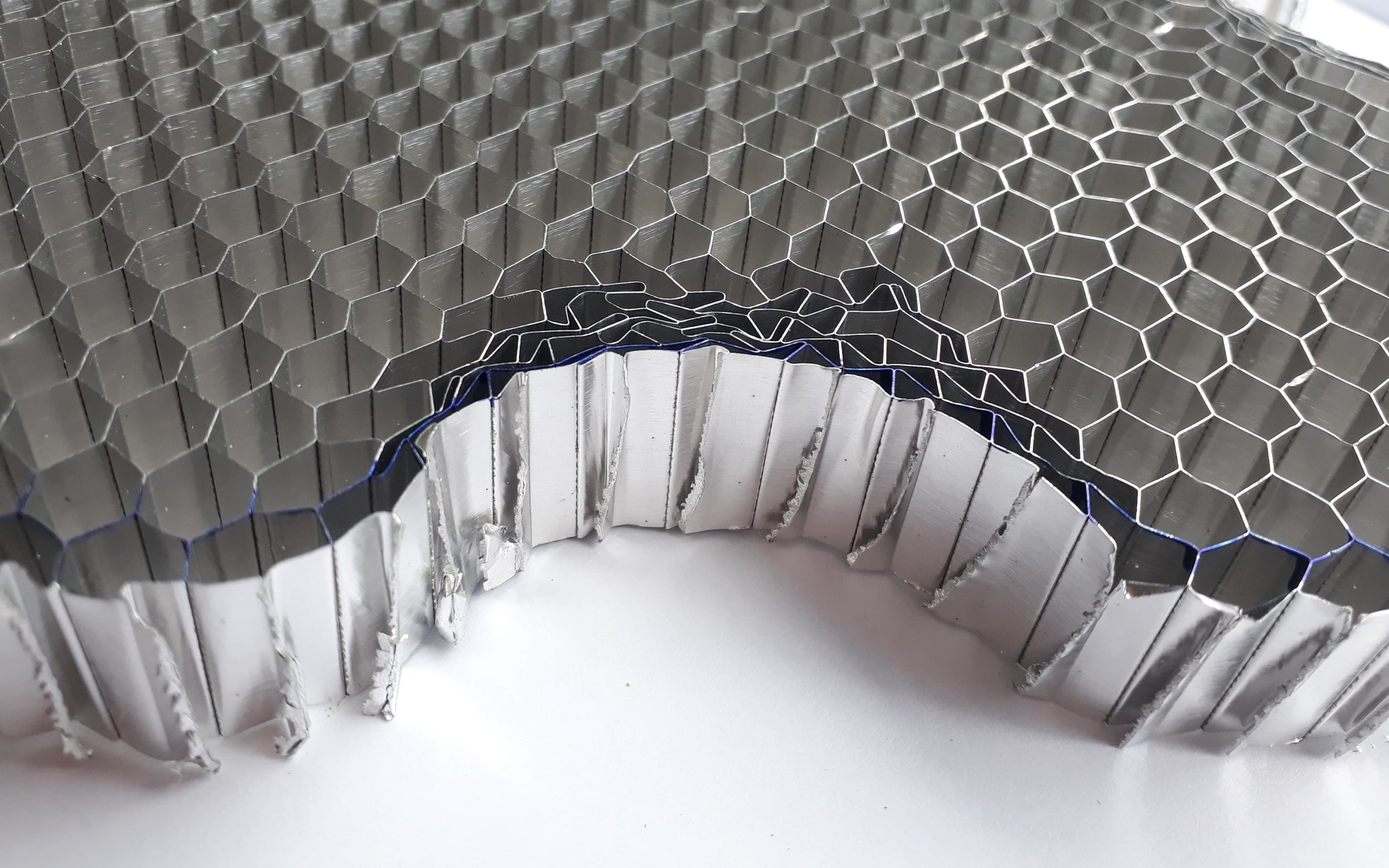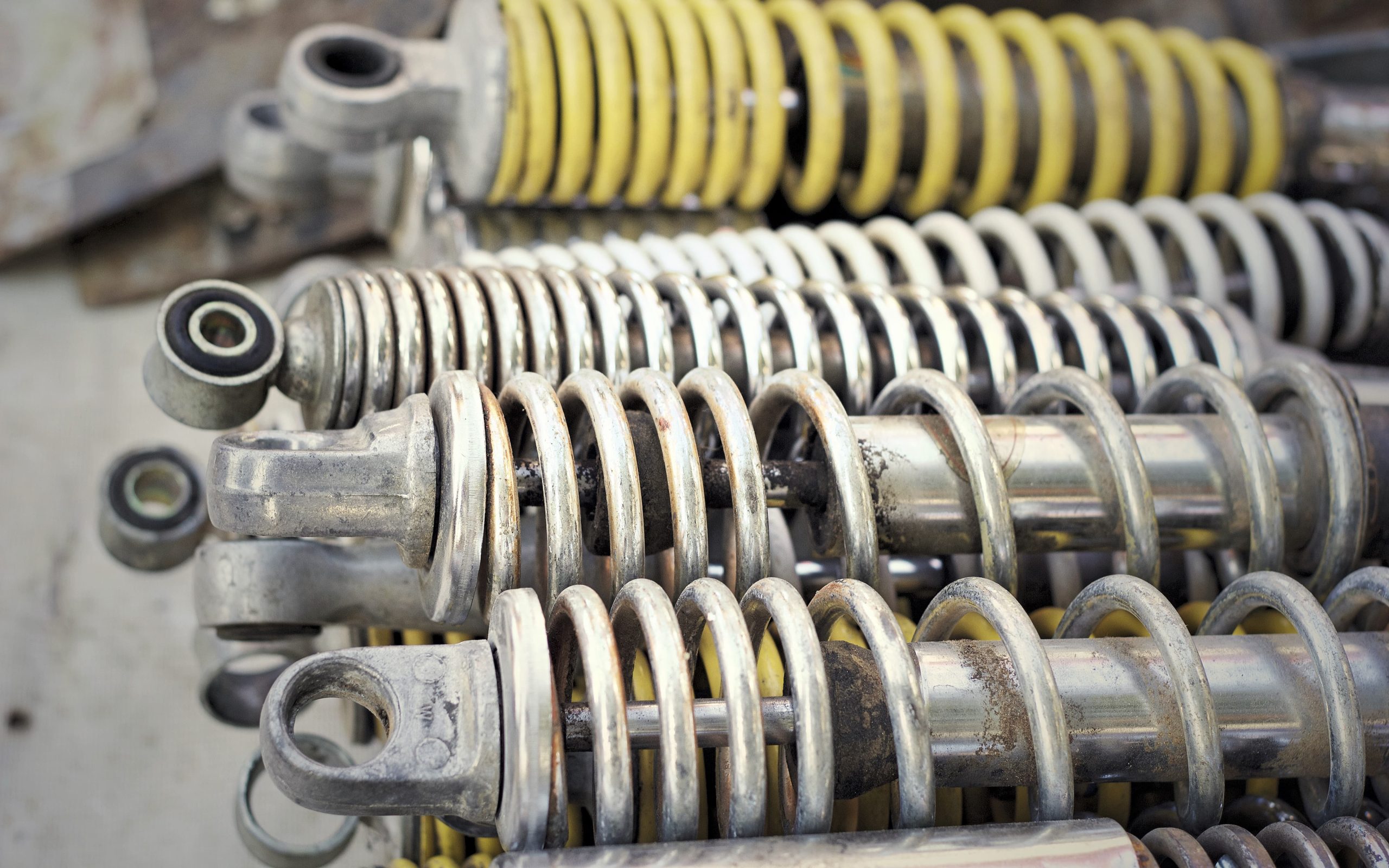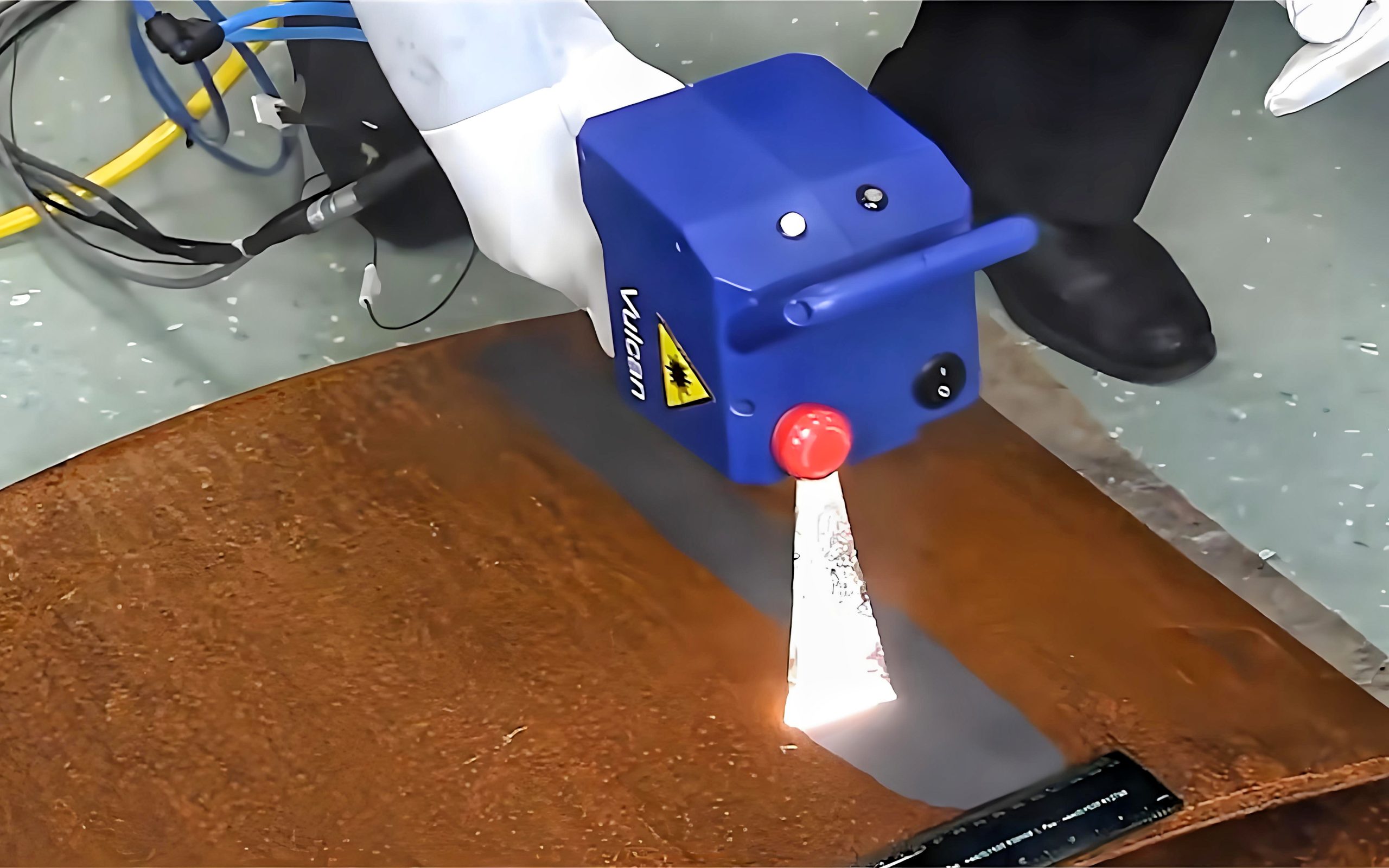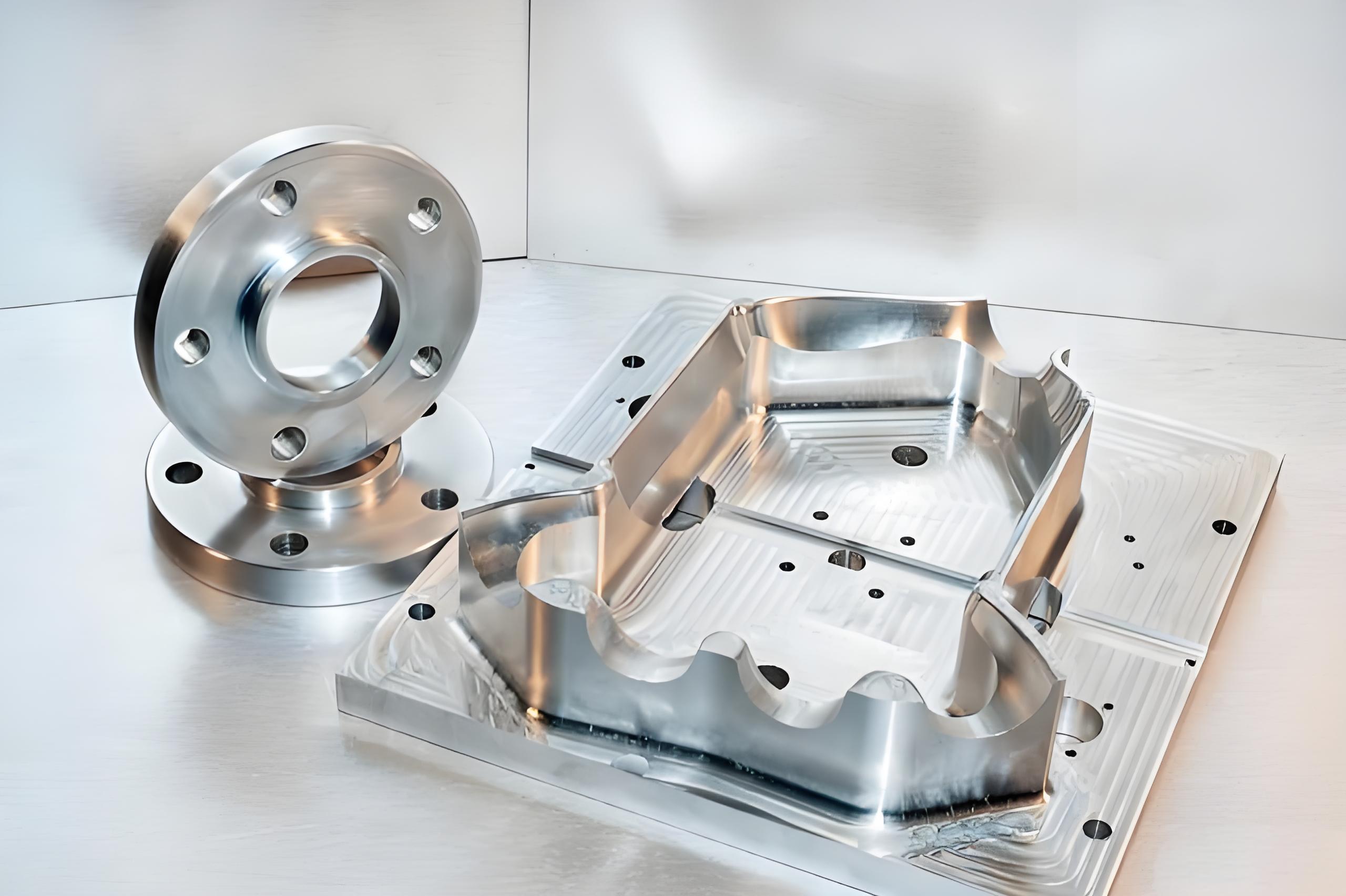Alles über keramische Sandstrahlperlen
August 29, 2024

In der modernen Fertigung spielen Oberflächenbehandlungsverfahren eine entscheidende Rolle. Bei der Sandstrahltechnik als gängige Oberflächenbehandlungsmethode werden Strahlmittel mit hoher Geschwindigkeit auf die Oberfläche eines Werkstücks geschleudert, um es zu reinigen, zu entgraten oder die Oberflächenhärte zu erhöhen. Unter den verschiedenen Sandstrahlmitteln zeichnen sich keramische Strahlperlen durch ihre einzigartigen physikalischen Eigenschaften und ihre hervorragende Leistung aus.
Keramische Strahlmittelperlen und keramische Strahlmittelperlen sind in ihrer Zusammensetzung ähnlich und bestehen hauptsächlich aus Zirkoniumoxid und Siliziumdioxid. Sie unterscheiden sich jedoch in ihrer Form: Keramikkorn-Strahlmittel sind kantig, während Keramikkügelchen-Strahlmittel kugelförmig sind. Dieser Formunterschied wirkt sich erheblich auf ihre Anwendungsleistung aus. In diesem Artikel werden die Zusammensetzung, der Herstellungsprozess, die physikalischen Eigenschaften, die Anwendungsbereiche, die Vorteile und die Herausforderungen von keramischen Strahlperlen im Detail untersucht, und es werden bewährte Verfahren und Analysen des wirtschaftlichen Nutzens vorgestellt, damit Sie dieses Strahlmittel besser verstehen.
Zusammensetzung und Herstellungsverfahren
Analyse der Zusammensetzung
Keramische Strahlperlen bestehen hauptsächlich aus Zirkoniumoxid (ZrO₂), gefolgt von Siliziumdioxid (SiO₂). Diese Zusammensetzung verleiht ihnen einzigartige Vorteile bei der Oberflächenbehandlung.
- Zirkoniumoxid (ZrO₂): Bietet eine hervorragende Härte und Verschleißfestigkeit, so dass die Perlen ihre Struktur auch bei hochintensiven Sandstrahlverfahren beibehalten. Es wird häufig bei Anwendungen eingesetzt, die eine hohe Haltbarkeit erfordern.
- Siliziumdioxid (SiO₂): Verbessert die chemische Stabilität der Perlen und sorgt für eine gewisse Zähigkeit und Hitzebeständigkeit.
Herstellungsprozess
Der Herstellungsprozess von keramischen Strahlperlen umfasst drei Hauptschritte: die Aufbereitung des Rohmaterials, die Formgebung und die Sinterung.
- Vorbereitung des Rohmaterials: Hochreines Zirkoniumoxidpulver wird mit Siliziumdioxidpulver in einem bestimmten Verhältnis gemischt. Die gemischten Rohstoffe werden fein verarbeitet, um die Einheitlichkeit und Leistungsstabilität der fertigen Perlen zu gewährleisten.
- Gestaltung: Die ersten Perlen werden durch Sprühtrocknung oder andere Formgebungsverfahren geformt. Um die eckige Struktur zu erreichen, werden in der Regel Formen oder spezielle Formgebungsverfahren verwendet. Diese Form bietet eine größere Schneidkraft und eine größere Kontaktfläche.
- Sintern: Die geformten Perlen werden in einem Hochtemperaturofen gesintert. Die Temperatur- und Zeitsteuerung während des Sinterns ist entscheidend für die endgültige Härte und Dichte der Perlen. Nach dem Sintern werden die Perlen gesiebt und sortiert, um die Konsistenz von Größe und Form zu gewährleisten.
Merkmale
Form-Analyse
Die kantige Struktur keramischer Sandstrahlperlen bietet erhebliche Vorteile. Beim Sandstrahlen bieten kantige Perlen im Vergleich zu kugelförmigen Perlen eine größere Schneidkraft und eine stärkere Oberflächenreinigungswirkung. Außerdem sind sie effektiver bei der Entfernung von Schmutz und Verunreinigungen aus komplexen Geometrien oder schwer zugänglichen Bereichen.
Wichtige physikalische Eigenschaften
- Härte: Keramische Strahlperlen haben in der Regel eine Härte von Mohs 7. Diese hohe Härte ermöglicht es den Perlen, bei der Behandlung von Materialien mit hoher Härte gute Leistungen zu erbringen, ohne starken Verschleiß zu verursachen.
- Dichte: Keramische Strahlkugeln haben im Allgemeinen eine Dichte von 3,8 g/cm³. Eine höhere Dichte bedeutet, dass die Perlen beim Strahlen eine größere Aufprallkraft erzeugen können, was die Aufprall- und Reinigungswirkung auf der Werkstückoberfläche erhöht und sie für hochintensive Oberflächenbehandlungsaufgaben geeignet macht.
- Abnutzungswiderstand: Aufgrund ihrer hohen Härte und kantigen Struktur weisen die keramischen Strahlperlen eine ausgezeichnete Verschleißfestigkeit auf. Bei langfristigen, hochintensiven Sandstrahlarbeiten behalten die Perlen ihre gute Leistung bei und verlängern ihre Lebensdauer.
Vergleich mit keramischen Perlen als Strahlmittel
Der Hauptunterschied zwischen keramischen Sandstrahlperlen und keramischen Perlenstrahlmitteln ist ihre Form. Kugelförmige Strahlmittel werden in der Regel für Anwendungen mit geringeren Anforderungen an die Oberfläche verwendet, z. B. zum Entgraten oder zur groben Oberflächenbehandlung, während kantige Perlen aufgrund ihrer größeren Schneidkraft und Oberflächenkontaktfläche für hochpräzise und effiziente Oberflächenreinigungsaufgaben geeignet sind. Sie bieten auch eine bessere Flexibilität bei komplexen Formen oder beengten Platzverhältnissen.
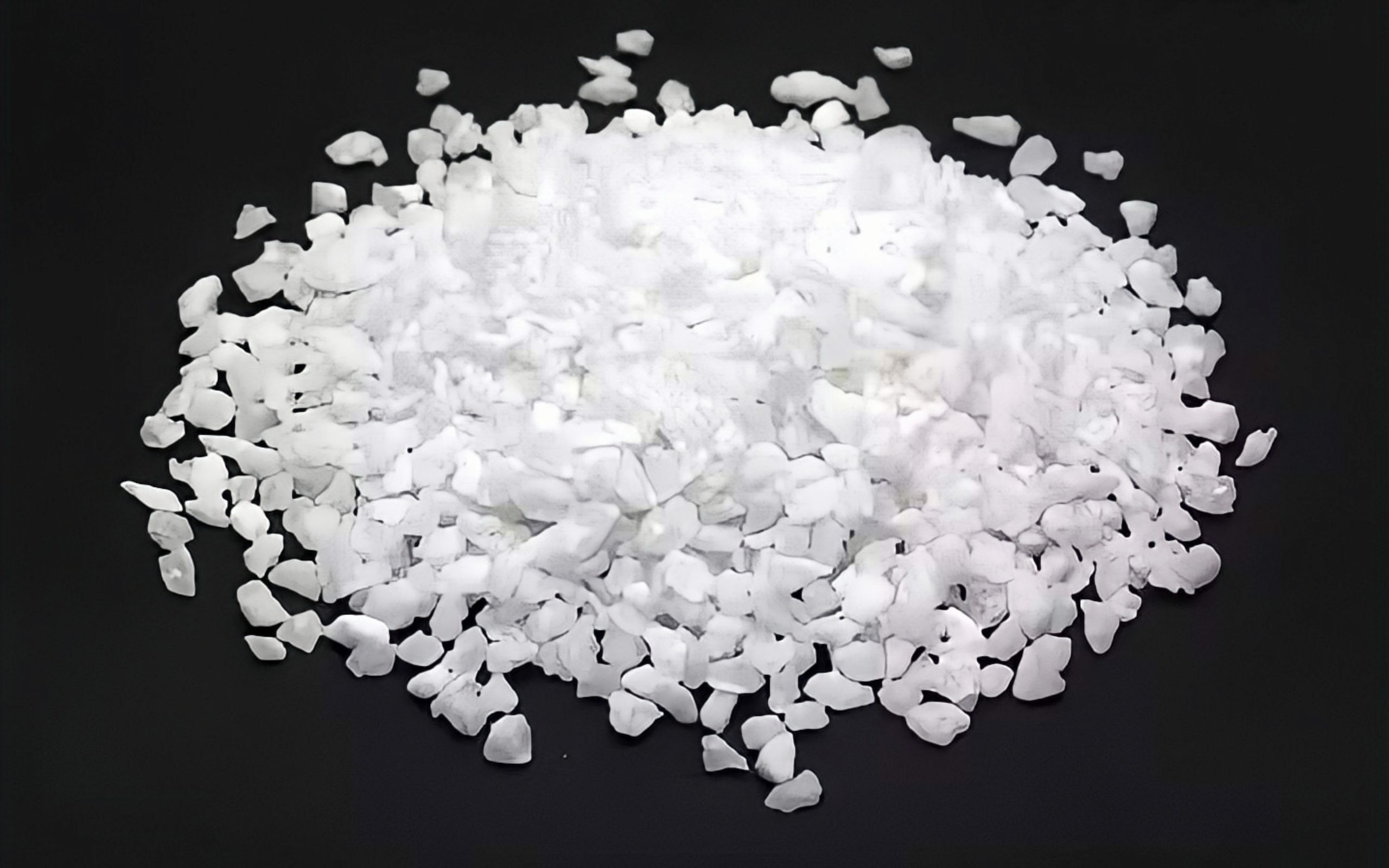
Prismatische keramische Strahlmittelkugeln
Anwendungsbereiche
Keramische Strahlperlen werden aufgrund ihrer hervorragenden Leistung in verschiedenen Industriezweigen eingesetzt, insbesondere in Branchen mit hohen Anforderungen an die Oberflächenbehandlung. Hier sind einige typische Anwendungsszenarien:
Luft- und Raumfahrt
In der Luft- und Raumfahrtindustrie ist die Oberflächenbehandlung von Bauteilen entscheidend für die Sicherheit und Leistung von Flugzeugen. Die hohe Härte und Verschleißfestigkeit keramischer Strahlperlen machen sie zur idealen Wahl für die Behandlung kritischer Komponenten wie Turbinenschaufeln und Triebwerksgehäusen. Diese Teile sind in der Regel aus Hochtemperaturlegierungen mit sehr hoher Härte und komplexen Geometrien gefertigt. Keramische Strahlperlen können Oxidschichten und andere Verunreinigungen entfernen, ohne die Oberfläche des Werkstücks zu beschädigen, und bilden so eine gute Grundlage für die nachfolgende Bearbeitung.
Unterhaltungselektronik
Bei der Herstellung von Unterhaltungselektronik wie Smartphones, Tablets und Laptops wirkt sich die Qualität der Oberflächenbehandlung direkt auf das Aussehen und die Haltbarkeit des Produkts aus. Keramische Sandstrahlperlen werden zur Reinigung und Verbesserung der Oberflächen von Metallgehäusen verwendet und sorgen für eine bessere Haftung und Ästhetik. Bei der Herstellung von mikroelektronischen Bauteilen können keramische Strahlperlen außerdem feine Grate und Rückstände entfernen und so die Präzision und Zuverlässigkeit der Bauteile gewährleisten.
Militär
Militärische Ausrüstungen erfordern strenge Normen für die Oberflächenbehandlung. Keramische Strahlperlen werden häufig für die Oberflächenbehandlung von Panzern, Waffenkomponenten und anderen militärischen Ausrüstungen verwendet, um Rost und Beschichtungsrückstände wirksam zu entfernen und eine glatte Oberfläche für neue Beschichtungen zu schaffen. Ihre effiziente Reinigungswirkung und lange Lebensdauer machen sie zu einem unverzichtbaren Material in der Militärindustrie.
Automobilherstellung
In der Automobilherstellung ist die Oberflächenbehandlung von Fahrzeugkarosserien und Motorkomponenten entscheidend. Keramische Strahlperlen werden zur Reinigung der Oberflächen von Karosserieteilen, Aluminiumrädern und anderen Metallteilen verwendet. Sie können Oxidschichten und Verunreinigungen entfernen und sorgen so für eine glatte und gleichmäßige Oberfläche für die anschließende Lackierung und Beschichtung. Darüber hinaus trägt die Langlebigkeit von keramischen Strahlperlen dazu bei, die Produktionskosten zu senken und die Effizienz zu verbessern.
Fallstudien zur Anwendung
Fall 1: Luft- und Raumfahrtindustrie
- Hintergrund: Boeing musste eine große Anzahl von Turbinenschaufeln und Triebwerksgehäusen bearbeiten, wobei Oxidschichten und Verunreinigungen entfernt werden mussten, ohne die Werkstücke zu beschädigen.
- Anmeldung: Für die Sandstrahlbehandlung wurden keramische Sandstrahlperlen verwendet. Dank ihrer hohen Härte und Schneidkraft wurden die Oxidschichten auf der Oberfläche erfolgreich entfernt, wobei die geometrische Präzision erhalten blieb.
- Wirkung: Die Oberflächenqualität der Werkstücke wurde deutlich verbessert, und die Haftung der Beschichtungen in den nachfolgenden Bearbeitungsschritten wurde erheblich gesteigert, was die Produktionseffizienz um 20% erhöhte.
Fall 2: Unterhaltungselektronikindustrie
- Hintergrund: Apple musste die Metallgehäuse seiner Smartphones behandeln, um das Aussehen und die Haltbarkeit der Produkte zu verbessern.
- Anmeldung: Keramische Strahlperlen wurden verwendet, um die Oberflächen von Metallgehäusen zu reinigen und zu verbessern, um die Haftung der Beschichtung und die Ästhetik zu verbessern.
- Wirkung: Das Aussehen des Produkts wurde glatter und gleichmäßiger, und die Zufriedenheit der Verbraucher mit dem Aussehen des Produkts stieg um 15%.
Fall 3: Militärische Industrie
- Hintergrund: Lockheed Martin musste Panzeroberflächen behandeln, um Rost und alte Beschichtungen zu entfernen und eine glatte Oberfläche für neue Beschichtungen zu schaffen.
- Anmeldung: Für die Sandstrahlbehandlung wurden keramische Strahlperlen gewählt, die alten Rost und Beschichtungen wirksam entfernen und eine gute Grundlage für neue Beschichtungen bilden.
- Wirkung: Die Qualität der Oberflächenbehandlung der Panzerung wurde deutlich verbessert, und die Haftung und Haltbarkeit der neuen Beschichtungen wurde erheblich gesteigert, wodurch die Wartungskosten gesenkt wurden.

Ein gepanzerter Panzer, für dessen Zusammenbau präzise Teile benötigt werden
Vorteile und Herausforderungen
Vorteile
- Effiziente Oberflächenreinigung: Die kantige Struktur der keramischen Strahlperlen sorgt für eine größere Schneidkraft und Oberflächenkontaktfläche und ermöglicht eine effizientere Entfernung von Oberflächenverschmutzungen und Verunreinigungen.
- Lange Lebensdauer: Hohe Härte und Verschleißfestigkeit gewährleisten eine hervorragende Leistung bei längerem Einsatz, wodurch die Häufigkeit des Austauschs verringert und somit die Betriebskosten gesenkt werden.
- Starke Anpassungsfähigkeit: Keramische Strahlperlen können sich an verschiedene komplexe Formen und Materialien anpassen und eignen sich besonders gut für die Bearbeitung von Werkstücken mit hoher Härte und komplexen Geometrien.
Herausforderungen
- Ausrüstung Abnutzung: Die hohe Härte keramischer Strahlkugeln erhöht zwar die Reinigungsleistung, kann aber im Laufe der Zeit den Verschleiß der Sandstrahlanlagen beschleunigen. Daher werden die Wartung der Anlagen und der Austausch von Komponenten zu kritischen Fragen.
- Wulstverlust: Beim Sandstrahlen kann die kantige Struktur der keramischen Strahlperlen zu höheren Bruchraten führen, was ihre Lebensdauer und Reinigungswirkung beeinträchtigt. Eine regelmäßige Überwachung des Strahlperlenzustands und eine angemessene Wiederherstellung und ein Austausch sind notwendig.
Wie erreiche ich die besten Ergebnisse?
1. Die Wahl der richtigen Spezifikation
Die Auswahl der richtigen Spezifikation der keramischen Strahlperlen ist entscheidend für das Erreichen der besten Sandstrahlergebnisse. Größe, Form und Härte der Strahlperlen sollten den Anforderungen an Material und Oberflächenbehandlung des Werkstücks entsprechen. Im Allgemeinen sind größere Perlen für grobe Oberflächenbehandlungen geeignet, während kleinere Perlen für die Feinbearbeitung verwendet werden. Nachstehend sind die drei Spezifikationen von unsere keramischen Sandstrahlperlen und ihre jeweiligen Funktionen:
F120 63-125 Mikrometer
- Vorteile
- Hohe Reinigungseffektivität: Die größere Perlengröße bietet eine stärkere Schlagkraft und eignet sich zum Entfernen von dicken Beschichtungen, Rost oder hartnäckigen Verunreinigungen.
- Breiter Anwendungsbereich: Sie können verschiedene Materialien, darunter Metalle und Beton, mit erheblichen Auswirkungen bearbeiten.
- Geringere Abnutzungsrate: Größere Perlen verschleißen die Geräte während der Oberflächenbehandlung in der Regel nicht übermäßig, was die Lebensdauer der Geräte verlängert.
- Verwendungsszenarien
- Schwere Reinigung: Zur Behandlung von dicken Beschichtungen und Rost, z. B. bei großen Maschinenteilen und technischen Geräten.
- Gussteilbearbeitung: Geeignet zum Reinigen und Entgraten von Gussteilen, insbesondere in der Gießereiindustrie und der metallverarbeitenden Industrie.
- Vorbereitung der Oberfläche: Vorbehandlung rauer Oberflächen vor dem Sprühen oder Beschichten, um die spätere Haftung der Beschichtung zu verbessern.
F170 45-90 Mikrometer
- Vorteile
- Gleichmäßiger Reinigungseffekt: Mittelgroße Perlen sorgen für eine gleichmäßige Reinigungswirkung, geeignet für mittelstarke Beschichtungen und Verunreinigungen.
- Effiziente Oberflächenbearbeitung: Ausgewogenes Verhältnis zwischen Reinigungseffektivität und Perlenverbrauch, anwendbar für eine breite Palette von Anwendungen.
- Geringere Staubentwicklung: Im Vergleich zu größeren Perlen erzeugt F170 weniger Staub bei der Verarbeitung, was die Arbeitsumgebung verbessert.
- Verwendungsszenarien
- Feine Oberflächenbehandlung: Wird im Automobilbau, in der Elektronik usw. zur Reinigung dünner Schichten oder feiner Verunreinigungen verwendet.
- Standard-Reinigung: Geeignet für verschiedene Standard-Reinigungsanwendungen, wie z. B. die Behandlung allgemeiner Metalloberflächen und die Entfernung von leichtem Rost.
- Vorbereitung der Oberfläche für die Lackierung: Wirksam zur Vorbereitung von Oberflächen für Anstriche oder Beschichtungen, um einen glatten und sauberen Untergrund zu gewährleisten.
F20 50-63 Mikrometer
- Vorteile
- Hohe Präzision: Die kleine Perlengröße sorgt für einen präzisen Reinigungseffekt, geeignet für Detailarbeiten und Präzisionsteile.
- Gute Oberflächengüte: Ermöglicht eine hochwertige Oberflächenbearbeitung, die das Aussehen und die funktionelle Qualität des Werkstücks verbessert.
- Geringerer Verschleiß der Ausrüstung: Kleinere Perlen führen zu einem geringeren Verschleiß der Geräte und verlängern deren Lebensdauer.
- Verwendungsszenarien
- Präzise Teilereinigung: Für die Behandlung kleiner oder empfindlicher Teile in der Elektronik, Luft- und Raumfahrt usw.
- Oberflächenveredelung: Geeignet zur Verbesserung der Oberflächenqualität, z. B. zum Entfernen feiner Grate und zum Erzielen einer glatten Oberfläche.
- Mikro-Verarbeitung: Ideal für die Bearbeitung kleiner Werkstücke oder komplizierter Teile, bei denen Präzision und Oberflächenqualität entscheidend sind.
2. Optimierung der Betriebsbedingungen
Um die Wirksamkeit keramischer Strahlmittel zu maximieren, ist es wichtig, die Betriebsbedingungen während des Strahlprozesses zu optimieren. Dazu gehören Faktoren wie Strahldruck, Strahlwinkel und Strahlzeit. Ein angemessener Strahldruck stellt sicher, dass die Strahlperlen die Oberfläche des Werkstücks effektiv treffen, während der richtige Strahlwinkel und die richtige Strahlzeit dazu beitragen, übermäßigen Verschleiß und ungleichmäßige Behandlung zu vermeiden. (Sie können sich auf dieser Artikel)
3. Wartung der Ausrüstung und Rückgewinnung von Perlen
Die regelmäßige Wartung der Strahlanlage ist entscheidend für ihren langfristigen stabilen Betrieb. Es ist notwendig, die Ausrüstung regelmäßig auf Verschleiß zu überprüfen und verschlissene Teile rechtzeitig zu ersetzen. Auch die Rückgewinnung und Wiederverwendung von Strahlmitteln trägt zur Kostensenkung und Abfallvermeidung bei. Durch ordnungsgemäßes Sieben und Reinigen können gebrauchte Perlen effektiv zurückgewonnen werden, wodurch sich ihre Lebensdauer verlängert.
Wirtschaftliche Vorteile und Umweltfreundlichkeit
Kosten-Wirksamkeits-Analyse
Die anfänglichen Kosten für keramische Strahlmittel sind höher, aber ihre hervorragende Abriebfestigkeit und lange Lebensdauer ermöglichen im Laufe der Zeit eine Senkung der Stückkosten. Im Vergleich zu anderen Strahlmitteln bieten keramische Strahlmittel aufgrund ihrer effizienten Reinigungswirkung und langen Lebensdauer erhebliche wirtschaftliche Vorteile in der Großproduktion. Insbesondere können die Gesamtproduktionskosten erheblich gesenkt werden, indem die Häufigkeit des Austauschs und die Wartungskosten verringert werden.
Diskussion über Umweltfreundlichkeit
Da ihre Hauptbestandteile Zirkoniumdioxid und Siliziumdioxid sind, die bei der Herstellung und Verwendung nur minimale Auswirkungen auf die Umwelt haben, schneiden keramische Strahlmittel auch in Bezug auf die Umweltfreundlichkeit gut ab. Außerdem sind sie leicht zu recyceln und wiederzuverwenden, was zur Abfallvermeidung und zur Verringerung der Umweltbelastung beiträgt. Die geringe Staubentwicklung bei der Verwendung trägt ebenfalls zu einer besseren Arbeitsumgebung bei. Darüber hinaus kann die Einführung umweltfreundlicher Produktionsverfahren und Materialien die Umweltfreundlichkeit weiter verbessern.
Zukünftige Entwicklungstrends
Technologische Fortschritte
Mit den Fortschritten in der Materialwissenschaft und der Herstellungstechnologie dürften sich die Produktionsverfahren und die Leistung von Keramikstrahlmitteln weiter verbessern. Die Anwendung neuer keramischer Werkstoffe und verfeinerter Fertigungstechniken wird keramische Strahlperlen effizienter und wirtschaftlicher machen.
Marktnachfrage
Da die industriellen Anwendungen weiter zunehmen, wächst auch die Nachfrage nach keramischen Strahlmitteln. Künftig werden neue aufstrebende Industrien und Anwendungsszenarien die Marktentwicklung vorantreiben, wie z. B. die neue Energieindustrie und High-Tech-Bereiche.
Umweltschutz und nachhaltige Entwicklung
Vor dem Hintergrund immer strengerer Umweltvorschriften werden sich Herstellung und Verwendung von keramischen Strahlmitteln stärker auf Umweltschutz und nachhaltige Entwicklung konzentrieren. Künftige Entwicklungen könnten die Verringerung der Umweltauswirkungen während der Produktion und die Erhöhung der Recyclingrate der Strahlmittel umfassen.
Keramische Strahlperlen mit ihrer einzigartigen kantigen Form und hohen Härte bieten zahlreiche Vorteile für die Oberflächenbehandlung. Sie bieten eine effiziente Reinigung, lange Lebensdauer und Anpassungsfähigkeit an verschiedene Materialien und komplexe Geometrien. Trotz einiger Herausforderungen, wie z. B. Geräteverschleiß und Perlenverlust, können ihre Vorteile durch die richtige Auswahl, Wartung und Optimierung maximiert werden. In Branchen wie der Luft- und Raumfahrt, der Unterhaltungselektronik, dem Militär und der Automobilherstellung spielen keramische Strahlperlen eine entscheidende Rolle bei der Erzielung hochwertiger Oberflächenbehandlungen und der Verbesserung der allgemeinen Produktionseffizienz. Ihre wirtschaftlichen Vorteile, einschließlich Kosteneffizienz und erhöhter Effizienz, machen sie zu einer wertvollen Wahl für verschiedene Oberflächenbehandlungsaufgaben.
Filter


